Long and short scales
The long and short scales [1] are two of several different large number naming systems used throughout the world for integer powers of ten (10). Many countries, including most in continental Europe, use the long scale whereas most English-speaking countries use the short scale. In all such countries, the number names are translated into the local language, but retain a name similarity due to shared etymology. Some languages, particularly in East Asia, have large number naming systems that are neither long nor short scale.
- Long scale is the English translation of the French term échelle longue. It refers to a system of large number names in which every new term greater than million is 1,000,000 times the previous term: billion means a million millions (1012), trillion means a million billions (1018), and so on.
- Short scale is the English translation of the French term échelle courte. It refers to a system of large number names in which every new term greater than million is 1,000 times the previous term: billion means a thousand millions (109), trillion means a thousand billions (1012), and so on.
Up to but excluding a thousand million (< 109), the two scales are identical. At and above a thousand million (≥ 109), the two scales diverge by using the same words for different number values. These false friends[2] can be a source of misunderstanding.
For most of the 19th and 20th centuries, the United Kingdom uniformly used the long scale,[3] while the United States of America used the short scale,[3] so that usage of the two systems was often referred to as British and American respectively. In 1974, the government of the UK switched to the short scale, a change that is reflected in its mass media and official usage.[4][5][6][7] Although some residual usage of the long scale continues in the UK,[8] the phrases British usage and American usage are no longer accurate nor helpful characterizations.
Usage of the two systems can be a subject of controversy. Differences in opinion as to which system should be used can evoke resentment between adherents, while national differences of any kind can acquire jingoistic overtones.[9]
Contents |
Comparison
The same numerical value has two different names, depending on whether the value is being expressed in the long or short scale. Equivalently, the same name has two different numerical values depending on whether it is being used in the long or short scale.
Each scale has a logical justification to explain the use of each such differing numerical name and value within each scale - the short scale logic being based on powers of one thousand; the long scale logic being based on powers on one million. In both scales, bi- refers to 2 and tri- refers to 3, etc.
The relationship between the numeric values and the corresponding names in the two scales can be described as:
| Value in Scientific notation | Value in numerals | Short Scale | Long Scale | ||
|---|---|---|---|---|---|
| Name | Logic | Name | Logic | ||
| 10 0 = | 1 | one | one | ||
| 10 3 = | 1,000 | thousand | thousand | ||
| 10 6 = | 1,000,000 | million |  |
million | |
| 10 9 = | 1,000,000,000 | billion |  |
milliard = thousand million | |
| 1012 = | 1,000,000,000,000 | trillion |  |
billion |  |
| 1015 = | 1,000,000,000,000,000 | quadrillion |  |
billiard = thousand billion | |
| 1018 = | 1,000,000,000,000,000,000 | quintillion |  |
trillion |  |
| 1021 = | 1,000,000,000,000,000,000,000 | sextillion |  |
trilliard = thousand trillion | |
| etc. | etc. | etc. | etc. | etc. | etc. |
The relationship between the names and the corresponding numeric values in the two scales can be described as:
| Name | Short Scale | Long Scale | ||
|---|---|---|---|---|
| Value in Scientific notation | Logic | Value in Scientific notation | Logic | |
| Million | 106 |  |
106 | |
| Billion | 109 |  |
1012 |  |
| Trillion | 1012 |  |
1018 |  |
| etc. | etc. | etc. | etc. | etc. |
| To get from one named order of magnitude to the next: multiply by a thousand. | To get from one named order of magnitude to the next: multiply by a million. | |||
For a more extensive table, see names of large numbers.
The word "milliard", or its translation, is found in many European languages and is used in those languages for 109. However, it is unknown in American English, which uses billion, and not used in British English, which preferred to use 'thousand million' before the current usage of 'billion'. The financial term "yard", which derives from "milliard", is used on financial markets, as it is unambiguous, unlike "billion". Likewise, many long scale countries use the word billiard (or similar) for a thousand long scale billions (i.e. 1015), and the word trilliard for a thousand long scale trillions (i.e. 1021), etc.
History
The existence of the different scales means that care must be taken when comparing large numbers between languages or countries, or when interpreting old documents in countries where the dominant scale has changed over time. For example, British English, French and Italian historical documents can refer to either the short or long scale depending on the date of the document, since each of the three countries used both systems at various times in their history. Nowadays, the United Kingdom officially uses the short scale, but France and Italy (and most other European countries) use the long scale.
- The pre-1974 former British English word billion, post-1961 current French word billion, post-1994 current Italian word bilione, German Billion; Dutch biljoen; Swedish biljon; Finnish biljoona; Danish billion; Spanish billón and the European Portuguese word bilião (note the alternate spelling to the Brazilian Portuguese variant) all refer to 1012, being long scale terms. Therefore, each of these words translates to the American English or post-1974 modern British English word: "trillion" (1012 in the short scale), and not "billion" (109 in the short scale).
- On the other hand, the pre-1961 former French word billion, pre-1994 former Italian word bilione, Brazilian Portuguese word bilhão and the Welsh word biliwn all refer to 109, being short scale terms. Each of these words translates to the American English or post-1974 modern British English word "billion" (109 in the short scale).
The terms "billion" and "milliard" both originally meant 1012 when introduced.
- In long scale countries, "milliard" was redefined down to its current value of 109, leaving "billion" at its original 1012 value and so on for the larger numbers. New terms: "billiard", "trilliard", etc. were introduced.
- In some short scale countries, "milliard" was redefined down to 109, with "trillion" redefined down to 1012 and so on for the larger numbers.
- In many short scale countries, "milliard" was dropped altogether and "billion" was redefined down to 109, adjusting downwards the value of "trillion" and all the larger numbers.
See Current usage below.
Timeline
| Date | Event |
|---|---|
| 13th century | The word "million" was not used before the 13th century, and Maximos Planoudes (cir 1260-1330) was among the first recorded users [10]. |
| 1475 | French mathematician Jehan Adam recorded the words "bymillion" and "trimillion" as meaning 1012 and 1018 respectively.[11]
|
| 1484 |

|
| 1549 | Jacques Pelletier du Mans used the name milliard (“milliart”) for "Million de Millions", i.e. 1012. He attributed this meaning to earlier usage by Guillaume Budé (1467–1540), a French scholar. |
| 17th century | The traditional six-digit groups were split up into three-digit groups. In France and Italy, some scientists then began using "billion" to mean 109, "trillion" to mean 1012, etc. This usage formed the origins of the later short scale. The majority of scientists either continued to say "thousand million" or changed the meaning of the Pelletier term, milliard, from "million of millions" down to "thousand million". This new meaning of "milliard" was occasionally used in England, but was widely adopted in France, Germany, Italy and the rest of Europe, for those keeping Chuquet's original long scale billion. The first published use of milliard as 109 occurred in 1676 in the Netherlands (Houck's Arithmetic) [10]. |
| Early 18th century | The short-scale meaning of the term "billion" was brought to the British American colonies, and first appeared in published form in the Greenwood book of 1729, written anonymously by Prof. Isaac Greenwood of Harvard[10] |
| Early 19th century | France widely converted to the short scale, and was followed by the U.S., which began teaching it in schools. Many French encyclopedias of the 19th century either omitted the long scale system or called it "a now obsolete system". |
| 1926 | H. W. Fowler's A Dictionary of Modern English Usage noted:
|
| 1948 | The 9th General Conference on Weights and Measures proposed the universal use of the long scale, inviting the short scale countries to return or convert. The proposal was considered but not adopted. |
| 1960 | The 11th General Conference on Weights and Measures adopted the International System of Units (SI), with its own set of numeric prefixes. SI is therefore independent of the number scale being used. SI also notes the language-dependence of some larger number names and advises against using ambiguous terms such as billion, trillion, etc. [14]. |
| 1961 | The French Government confirmed their official usage of the long scale in the Journal Officiel (the official French Government gazette). [15] |
| 1974 | British prime minister Harold Wilson explained in a written answer to the House of Commons that UK government statistics would from then on use the short scale. Hansard, for the 20 December 1974, reported it:
During the last quarter of the 20th century, most other English-speaking countries (Ireland, Australia, New Zealand, South Africa, Zimbabwe, etc.) either followed this lead or independently switched to the short scale use. However, in most of these countries, some limited long scale use persists and the official status of the short scale use is not clear. |
| 1975 | French mathematician Geneviève Guitel introduced the terms échelle courte (short scale) and échelle longue (long scale) to refer to the two numbering systems. [1] |
| 1994 | The Italian government confirmed their official usage of the long scale [17]. |
The origin of the word "million" seems to derive from the Old French Milion, thought to derive from Old Italian milione, an intensification of mille, a thousand. That is, a "million" is a "big thousand", much as "1728" (a dozen gross) is a "great gross".
Current usage
Short scale countries and regions
English language-speaking countries and regions
- 106 = one million, 109 = one billion, 1012 = one trillion, etc.
Most English-language countries use the short scale with 109 = billion. For example:
 Australia
Australia Hong Kong (English-speaking)
Hong Kong (English-speaking) Ireland (English-speaking)
Ireland (English-speaking)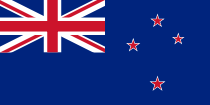 New Zealand
New Zealand Philippines (English-speaking): Some short-scale words have been adopted into Filipino.
Philippines (English-speaking): Some short-scale words have been adopted into Filipino. Singapore (English-speaking)
Singapore (English-speaking) United Kingdom (see Wales below)
United Kingdom (see Wales below) United States
United States Zimbabwe (English-speaking) [18][19]
Zimbabwe (English-speaking) [18][19]
Other short scale languages and countries
- 106 = one million, 109 = one milliard / billion, 1012 = one trillion, etc.
Other countries also use a word similar to trillion to mean 1012, etc. While a few of these countries use a word similar to billion to mean 109, most have kept a traditional long scale word similar to "milliard" for 109. Some examples of short scale use, and the words used for 109 and 1012, are:
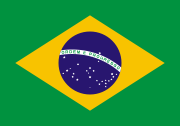 Brazil (bilhão, trilhão)
Brazil (bilhão, trilhão) Bulgaria (милиард miliard, трилион trilion)
Bulgaria (милиард miliard, трилион trilion) Estonia (miljard, triljon)
Estonia (miljard, triljon) Indonesia (milyar, triliun) [20]
Indonesia (milyar, triliun) [20] Iran (میلیارد milyard, )
Iran (میلیارد milyard, ) Israel (מיליארד millyard, טריליון trillyon)
Israel (מיליארד millyard, טריליון trillyon) Latvia (miljards, triljons)
Latvia (miljards, triljons)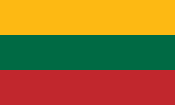 Lithuania (milijardas, trilijonas)
Lithuania (milijardas, trilijonas)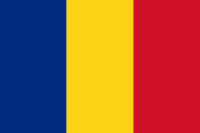 Romania (miliard / bilion, trilion)
Romania (miliard / bilion, trilion) Russia (миллиард milliard, триллион trillion)
Russia (миллиард milliard, триллион trillion) Turkey (milyar, trilyon)
Turkey (milyar, trilyon)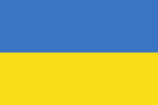 Ukraine (мільярд milliard, трильйон trillion)
Ukraine (мільярд milliard, трильйон trillion)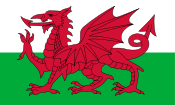 Wales (biliwn, triliwn)
Wales (biliwn, triliwn)
Short scale use but with other terminology
 Greece (εκατομμύριο ekatommyrio "hundred-myriad" = 106; δισεκατομμύριο disekatommyrio "bi+hundred-myriad" = 109; τρισεκατομμύριο trisekatommyrio "tri+hundred-myriad" = 1012; τετράκις εκατομμύριο tetrakis ekatommyrio "quadri+hundred-myriad" = 1015, and so on.) [21]
Greece (εκατομμύριο ekatommyrio "hundred-myriad" = 106; δισεκατομμύριο disekatommyrio "bi+hundred-myriad" = 109; τρισεκατομμύριο trisekatommyrio "tri+hundred-myriad" = 1012; τετράκις εκατομμύριο tetrakis ekatommyrio "quadri+hundred-myriad" = 1015, and so on.) [21]
Long scale countries
- 106 = one million, 109 = one milliard / thousand million, 1012 = one billion, 1015 = one billiard / thousand billion, 1018 = one trillion, etc.
The traditional long scale is used by most Continental European countries and by most other countries whose languages derive from Continental Europe (with the notable exceptions of Greece, Romania, Bulgaria and Brazil). These countries use a word similar to billion to mean 1012. Some use a word similar to milliard to mean 109, while others use something equivalent to thousand millions. Some examples of long scale use, and the words used for 109 and 1012, are:
 Andorra (Catalan: miliard or typ. mil milions, bilió)
Andorra (Catalan: miliard or typ. mil milions, bilió)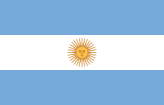 Argentina (Spanish: mil millones, billón)
Argentina (Spanish: mil millones, billón) Austria (Austrian German: Milliarde, Billion)
Austria (Austrian German: Milliarde, Billion).svg.png) Belgium (French: milliard, billion; Dutch: miljard, biljoen; German: Milliarde, Billion)
Belgium (French: milliard, billion; Dutch: miljard, biljoen; German: Milliarde, Billion)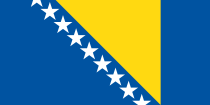 Bosnia and Herzegovina (Bosnian and Croatian: milijarda bilion; Serbian Cyrillic: милијарда milijarda, Билион)
Bosnia and Herzegovina (Bosnian and Croatian: milijarda bilion; Serbian Cyrillic: милијарда milijarda, Билион) Chile (Spanish: mil millones, billón)
Chile (Spanish: mil millones, billón) Colombia (Spanish: mil millones, billón)
Colombia (Spanish: mil millones, billón) Costa Rica (Spanish: mil millones, billón)
Costa Rica (Spanish: mil millones, billón)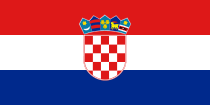 Croatia (milijarda, bilijun)
Croatia (milijarda, bilijun)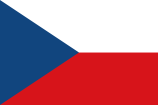 Czech Republic (miliarda, bilion)
Czech Republic (miliarda, bilion) Denmark (milliard, billion)
Denmark (milliard, billion) Dominican Republic (Spanish: mil millones, billón)
Dominican Republic (Spanish: mil millones, billón) Ecuador (Spanish: mil millones, billón)
Ecuador (Spanish: mil millones, billón) El Salvador (Spanish: mil millones, billón)
El Salvador (Spanish: mil millones, billón)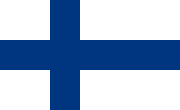 Finland (Finnish: miljardi, biljoona; Swedish: miljard, biljon)
Finland (Finnish: miljardi, biljoona; Swedish: miljard, biljon) France (milliard, billion)
France (milliard, billion) Germany (Milliarde, Billion)
Germany (Milliarde, Billion) Guatemala (Spanish: millardo, billón)
Guatemala (Spanish: millardo, billón) Hungary (milliárd, billió or ezer milliárd)
Hungary (milliárd, billió or ezer milliárd)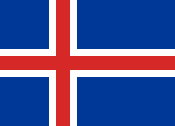 Iceland (milljarður, billjón)
Iceland (milljarður, billjón) Italy (miliardo, bilione) [17]
Italy (miliardo, bilione) [17] Liechtenstein (German: Milliarde, Billion)
Liechtenstein (German: Milliarde, Billion)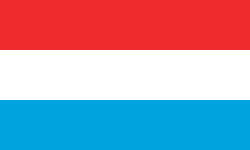 Luxembourg (Luxembourgish: milliard, billioun; French: milliard, billion; German: Milliarde, Billion)
Luxembourg (Luxembourgish: milliard, billioun; French: milliard, billion; German: Milliarde, Billion)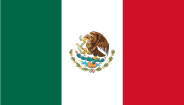 Mexico (Spanish: mil millones or millardo, billón)
Mexico (Spanish: mil millones or millardo, billón) Monaco (French: milliard, billion)
Monaco (French: milliard, billion)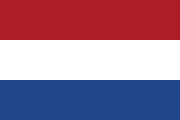 Netherlands (miljard, biljoen)
Netherlands (miljard, biljoen) Norway (milliard, billion)
Norway (milliard, billion)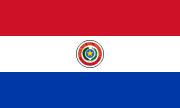 Paraguay (Spanish: mil millones, billón)
Paraguay (Spanish: mil millones, billón)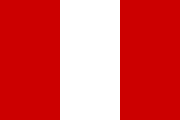 Peru (Spanish: mil millones, billón)
Peru (Spanish: mil millones, billón) Poland (miliard, bilion)
Poland (miliard, bilion) Portugal (mil milhões or milhar de milhões, bilião)
Portugal (mil milhões or milhar de milhões, bilião)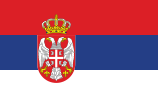 Serbia (милијарда milijarda, Билион bilion)
Serbia (милијарда milijarda, Билион bilion)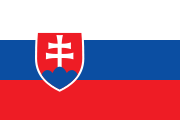 Slovakia (miliarda, bilión)
Slovakia (miliarda, bilión)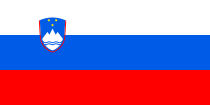 Slovenia (milijarda, bilijon)
Slovenia (milijarda, bilijon) Spain (Spanish: millardo or typ. mil millones, billón)
Spain (Spanish: millardo or typ. mil millones, billón)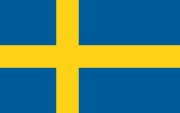 Sweden (miljard, biljon)
Sweden (miljard, biljon) Switzerland (French: milliard, billion; German: Milliarde, Billion; Italian: miliardo, bilione)
Switzerland (French: milliard, billion; German: Milliarde, Billion; Italian: miliardo, bilione) Uruguay (Spanish: mil millones or millardo, billón)
Uruguay (Spanish: mil millones or millardo, billón) Venezuela(Spanish: mil millones or millardo, billón)
Venezuela(Spanish: mil millones or millardo, billón)
Both long and short scales countries
Some countries use either the Short or Long scales, depending on the internal language being used or the context.
- 106 = one million, 109 = EITHER one billion (Short Scale) OR one milliard / thousand million (Long Scale), 1012 = EITHER one trillion (Short Scale) OR one billion (Long Scale), etc.
| Country | Short scale usage | Long scale usage |
|---|---|---|
| Canadian English (billion = 109, trillion = 1012) | Canadian French (milliard = 109, billion = 1012). | |
| economic & technical (billón = 109, trillón = 1012) | Latin american export publications (millardo or mil millones = 109, billón = 1012) | |
| South African English (billion = 109, trillion = 1012) | Afrikaans (miljard = 109, biljoen = 1012) |
Neither short nor long scale countries
The following countries have their own numbering systems and use neither short nor long scales:
| Country | Main article | Notes |
|---|---|---|
| Indian numerals | For everyday use, but short or long scale may also be in use; see below. | |
| Chinese numerals, Japanese numerals, Korean numerals |
All use a traditional myriad system for the larger numbers; special words and symbols up to 1088. |
Notes on current usage
English language countries
- Apart from the United States, the long scale was used for centuries in many English language countries before being superseded in recent times by short scale usage. Because of this history, some long scale use persists and the official status of the short scale in anglophone countries other than the UK and US, is sometimes obscure.
UK usage
- "Billion" has meant 109 in most sectors of official published writing for many years now. The UK government, the BBC, and most other broadcast or published mass media, have used the short scale in all contexts since the mid-1970s.[4][5][6][7]
- Before the widespread use of "billion" for 109, UK usage generally referred to thousand million rather than milliard.[8][24] The long scale term "milliard", for 109, is obsolete in British English, though its derivative, "yard", is still used as slang in the London money, foreign exchange and bond markets.
US usage
- In the United States of America, the short scale has been taught in school since the early 19th century. It is therefore used exclusively.
Australian usage
- In Australia, education, media outlets, and literature all use the short scale in line with other English-speaking countries. The current recommendation by the Australian Government Department of Finance and Deregulation (formerly known as AusInfo), and the legal definition, is the short scale. As recently as 1999, the same department did not consider short scale to be standard, but only used it occasionally. Some documents use the term thousand million for 109 in cases where two amounts are being compared using a common unit of one 'million'.
Canadian usage
- Canada uses both the long scale (in Canadian French) and the short scale (in Canadian English).
South African usage
- South Africa uses both the long scale (in Afrikaans) and the short scale (in South African English). Some Afrikaans publications briefly attempted usage of the "American System" but that has led to comment in the papers [22] and has been disparaged by the "Taalkommissie" (The Afrikaans Language Commission of the South African Academy of Science and Art) [23] and has thus, to most appearances, been abandoned.
Indian, Pakistani and Bangladeshi usage
- Outside of financial media, the use of "billion" by Bangladeshi, Indian and Pakistani English speakers highly depends on their educational background. Some may continue to use the traditional British long scale. In everyday life, Bangladeshis, Indians and Pakistanis largely use their own common number system, commonly referred to as the Indian numbering system – for instance, Bangladeshi, Pakistani, and Indian English commonly use the words lakh to denote 100 thousand, crore to denote ten million (i.e. 100 lakhs) and arab to denote one billion.
Indonesian usage
Indonesia officially employs the term milyar (derived from Dutch Miljard) for the number 109, with no exception. For the number 1012, the long-scale billion the term seribu milyar (a thousand milliards) or rarely sejuta juta (a million millions) is used. The high number of English literate speakers however are able to comprehend the short scale billion as being defined as 109, an Indonesian milyar. Occasionally the English word 'billion' (understood as meaning milyar) may be used in conversation.
Italian language usage
Italy – with France – was one of the two European countries which partially converted to the short scale during the 19th century, but returned to the original long scale in the 20th century.
In Italian, the word bilione officially means 1012. Colloquially, bilione can mean both 109 and 1012; trilione both 1012 and (rarer) 1018 and so on. [25][26] Therefore, in order to avoid ambiguity, they are seldom used. Forms such as miliardo for 109, mille miliardi (a thousand milliards) for 1012, un milione di miliardi for 1015, un miliardo di miliardi for 1018, mille miliardi di miliardi for 1021 are more common. [17][27]
Spanish language usage
"Millardo" (milliard) is sometimes used in Spanish-speaking countries for 109, but "mil millones" (a thousand millions) is used more frequently. The word "Billón" is sometimes incorrectly used in those countries more influenced by the United States but it is considered unacceptable[28].
Esperanto language usage
The Esperanto words biliono, triliono etc. used to be ambiguous, and both long or short scale were used and presented in dictionaries. The current edition of the main Esperanto dictionary PIV however recommends the long scale meanings, as does the grammar PMEG [29]. Ambiguity may be avoided by the use of the unofficial but generally-recognised suffix -iliono, whose function is analogous to the long scale, i.e. it is appended to a numeral indicating the power of a million, e.g. duiliono (from du meaning "two") = biliono (1012); triiliono = triliono (1018), etc. Miliardo is an unambiguous term for 109.
Presence on most continents
The long and short scales are both present on most continents, with usage dependent on the language used. Examples include:
| Continent | Short scale usage | Long scale usage |
|---|---|---|
| Africa | South African English | Afrikaans |
| North America | American English and Canadian English | Canadian French and American Spanish |
| South America | Brazilian Portuguese | American Spanish |
| Australia | Australian English | Indonesian |
| Europe | British English, Hiberno-English, Scottish English, Welsh English, Welsh, Bulgarian, Estonian, Latvian, Lithuanian, Romanian, Turkish, Ukrainian | French, German, Spanish, Portuguese, Italian, Dutch, Danish and most other languages of continental Europe |
Alternative approaches
Unambiguous ways of identifying large numbers include:
- In written communications, the simplest solution for moderately large numbers is simply to write the full amount- i.e., 1,000,000,000,000 rather than, say, 1 trillion (short scale) or 1 billion (long scale).
- Combinations of the unambiguous word 'million', for example: 109 = "one thousand million"; 1012 = "one million million". This becomes rather unwieldy for numbers above 1012.
- Combination of numbers with more than 3 digits with million, as in 15,300 million.
- Scientific notation (also known as standard form or exponential notation, for example 1x109, 1x1010, 1x1011, 1x1012, etc.), or its engineering notation variant (for example 1x109, 10x109, 100x109, 1x1012, etc.), or computer programming notation (1e9, 1e10, 1e11, 1e12, etc). This is the most common practice among scientists and mathematicians, and is both unambiguous and convenient.
- SI prefixes, for example, giga for 109 and tera for 1012. The International System of Units (SI) is independent of whichever scale is being used. Use with non-SI units (e.g. "giga-dollars", "giga-miles") is uncommon.
See also
- 1000000000 (109)
- Googol (number)
- Googolplex (number)
- False friends
- Jacques Peletier du Mans
- Jehan Adam
- Myriad
- Nicolas Chuquet
- Names of large numbers
- Orders of magnitude (numbers)
- Trillion
References
- ↑ 1.0 1.1 The first recorded use of the terms échelle courte and échelle longue was by the French mathematician Geneviève Guitel in 1975. Guitel, Geneviève (1975). Histoire comparée des numérations écrites. Paris: Flammarion. pp. 51–52. (French)
Guitel, Geneviève (1975). Histoire comparée des numérations écrites. Paris: Flammarion. pp. 566 – 574 (Chapter: "Les grands nombres en numération parlée (État actuel de la question)", i.e. "The large numbers in oral numeration (Present state of the question)" ). (French) - ↑ "False Friends Often Lead to Mistakes". WorldLanguage.com. http://www.worldlanguage.com/Articles/5.htm. Retrieved 2010-06-01.
discussion of pre-1974 English values and list of false friends between English and Spanish - ↑ 3.0 3.1 3.2 Fowler, H. W. (1926). A Dictionary of Modern English Usage. Great Britain: Oxford University Press.
noted:- "It should be remembered that [billion] does not mean in American use (which follows the French) what it means in British. For to us it means the second power of a million, i.e. a million millions (1,000,000,000,000); for Americans it means a thousand multiplied by itself twice, or a thousand millions (1,000,000,000), what we call a milliard. Since billion in our sense is useless except to astronomers, it is a pity that we do not conform."
- ↑ 4.0 4.1 4.2 ""BILLION" (DEFINITION) – HC Deb 20 December 1974 vol 883 cc711-2W". Hansard Written Answers. Hansard. 1974-12-20. http://hansard.millbanksystems.com/written_answers/1974/dec/20/billion-definition#S5CV0883P0_19741220_CWA_439. Retrieved 2009-04-02. – Prime Minister Harold Wilson explained in a written answer to the House of Commons that henceforth the UK Government would adopt the short-scale system
- "Mr. Maxwell-Hyslop asked the Prime Minister whether he will make it the practice of his administration that when Ministers employ the word 'billion' in any official speeches, documents, or answers to Parliamentary Questions, they will, to avoid confusion, only do so in its British meaning of 1 million million and not in the sense in which it is used in the United States of America, which uses the term 'billion' to mean 1,000 million.
- The Prime Minister: No. The word 'billion' is now used internationally to mean 1,000 million and it would be confusing if British Ministers were to use it in any other sense. I accept that it could still be interpreted in this country as 1 million million and I shall ask my colleagues to ensure that, if they do use it, there should be no ambiguity as to its meaning."
- ↑ 5.0 5.1 5.2 O'Donnell, Frank (30 July 2004). "Britain's £1 trillion debt mountain – How many zeros is that?". The Scotsman newspaper. http://news.scotsman.com/latestnews/Britains-1-trillion-debt-mountain.2550147.jp. Retrieved 2008-01-31.
referencing Harold Wilson's 1974 decision to change government usage from the long scale billion to the short scale billion. - ↑ 6.0 6.1 "Who wants to be a trillionaire?". BBC. 2007-05-07. http://news.bbc.co.uk/1/hi/programmes/more_or_less/6625545.stm. Retrieved 2010-05-11. – a 2007 BBC page on common modern usage of trillion.
- ↑ 7.0 7.1 "Linguist List 7.451". http://www.linguistlist.org/issues/7/7-451.html. – A 1996 email list message, comparing usage of the two scales in different languages.
- ↑ 8.0 8.1 "AskOxford: How many is a billion?". http://www.askoxford.com/asktheexperts/faq/aboutwords/billion?view=uk. – a traditional UK viewpoint.
- ↑ One illustration of this confusion is provided by a British author. Writing two decades after the official adoption of the short scale, he says that "we have two systems of large numbers: the elegant and logical British system and the American system.... the prefix bi means two. We know what it means and we use it correctly everywhere except in the word billion in the American system. In the American system, the nonsense starts with billion and continues with larger numbers...." Ron Nielsen (2006). The Little Green Handbook. Macmillan. ISBN 9780312425814., p. 290; original British publication by Scribe Publications, 2005
- ↑ 10.0 10.1 10.2 History of Mathematics Volume II p.84-86 (1925, republished 1953) by David Eugene Smith
- ↑ 11.0 11.1 http://www.sizes.com/numbers/big_numName.htm
- ↑ 12.0 12.1 Chuquet, Nicolas (written 1484, published 1880). Triparty en la science des nombres (ISSN 9012-9458). Aristide Marre, Bologna (Italy), 1880. (French)
Idem. "Nicolas Chuquet's manuscript". Published by www.miakinen.net. http://www.miakinen.net/vrac/nombres#lettres_zillions. Retrieved 2008-03-01. (French) - ↑ Idem. "Nicolas Chuquet's chapter". Transcription by Michael Florencetime. http://hexadecimal.florencetime.net/chuquet/triparty.htm. Retrieved 2008-03-01. (French)
- ↑ "Writing unit symbols and names, and expressing the values of quantities – 5.3.7 Stating values of dimensionless quantities, or quantities of dimension one". SI Brochure (8th edition). BIPM. http://www.bipm.org/en/si/si_brochure/chapter5/5-3-7.html. Retrieved 2008-01-31.
- ↑ "Décret 61-501 – page 4587, i.e. page 14 of 15 in this reference pdf and note 3 and erratum on page 7572, the last page of the pdf" (PDF). Journal Officiel. French Government. commissioned 1961-05-03 published 1961-05-20 modified 1961-08-11. http://www.ensmp.net/pdf/1961/decr-61-0501.pdf. Retrieved 2008-01-31. (French)
- ↑ Rowlett, Russ (2001-11-01). "Names for large numbers". University of North Carolina. http://www.unc.edu/~rowlett/units/large.html. Retrieved 2008-01-31. also contains a reference to Harold Wilson's 1974 decision. Otherwise, this article is an unadopted proposal for new names in the short scale system: it replaces billion by "gillion", cf. giga, then it uses Greek prefixes. Writing 26 years after Guitel, Rowlett's proposal used the ambiguous terms American and European instead of Short and Long Scale respectively. Note that North America, South America and Europe each use both scales depending on the language being used at the time.
- ↑ 17.0 17.1 17.2 Direttiva CE 1994 n. 55, page 12 (Italian)
- ↑ File:Zimbabwe $100bn 2008 Obverse.jpg
- ↑ File:Zimbabwe $100 trillion 2009 Obverse.jpg
- ↑ Robson S. O. (Stuart O.), Singgih Wibisono, Yacinta Kurniasih. Javanese English dictionary Tuttle Publishing: 2002, ISBN 079460000X: 821 pages
- ↑ Foundalis, Harry. "Greek Numbers and Numerals (Ancient and Modern)". http://www.foundalis.com/lan/grknum.htm. Retrieved 2007-05-20. (part of a Greek tutorial at foundalis.com)
- ↑ 22.0 22.1 "Biljoen gaan verwar". Die Burger. http://www.dieburger.com/Stories/Opinion/17.0.122900244.aspx.
- ↑ 23.0 23.1 Kotzé, E.F., Professor. "Taalkommissie se reaksie op biljoen, triljoen". Die Taalkommissie van die Suid-Afrikaanse Akademie vir Wetenskap en Kuns. http://152.111.1.251/argief/berigte/beeld/2008/02/20/B1/14/01milbiltril.html.
- ↑ "Million, Billion, Trillion ...". http://www.jimloy.com/math/billion.htm. – a 1999 webpage comparing the long and short scale numbers, which only considers traditional UK numbering.
- ↑ wiktionary:bilione
- ↑ wiktionary:trilione
- ↑ Peiretti, Federico. "Archimede e i grandi numeri". http://www2.polito.it/didattica/polymath/htmlS/Interventi/Articoli/Archimede%20e%20i%20grandi%20numeri/Archimede.htm. Retrieved 2008-01-31. (Italian)
- ↑ Diccionario Panhispánico de Dudas
- ↑ http://bertilow.com/pmeg/
External links
Current UK usage
- "BILLION (DEFINITION)". Hansard. http://hansard.millbanksystems.com/written_answers/1974/dec/20/billion-definition#S5CV0883P0_19741220_CWA_439. – the official Hansard report of 20 Dec 1974 when Harold Wilson defined 'Billion' for the UK Government.
- "Linguist List 7.451". http://www.linguistlist.org/issues/7/7-451.html.- A 1996 email list message, comparing the two scales usage in different languages.
- "Who wants to be a trillionaire?". BBC. 2007-05-07. http://news.bbc.co.uk/1/hi/programmes/more_or_less/6625545.stm. Retrieved 2010-05-11. – a 2007 BBC page on actual common media usage of trillion.
Traditional UK usage
- "Million, Billion, Trillion ...". http://www.jimloy.com/math/billion.htm. – a 1999 webpage comparing the long and short scale numbers, which only considers traditional UK numbering.
- "AskOxford: How many is a billion?". http://www.askoxford.com/asktheexperts/faq/aboutwords/billion?view=uk. – a current UK webpage with traditional usage viewpoint (featuring 'UK' and 'American' systems).